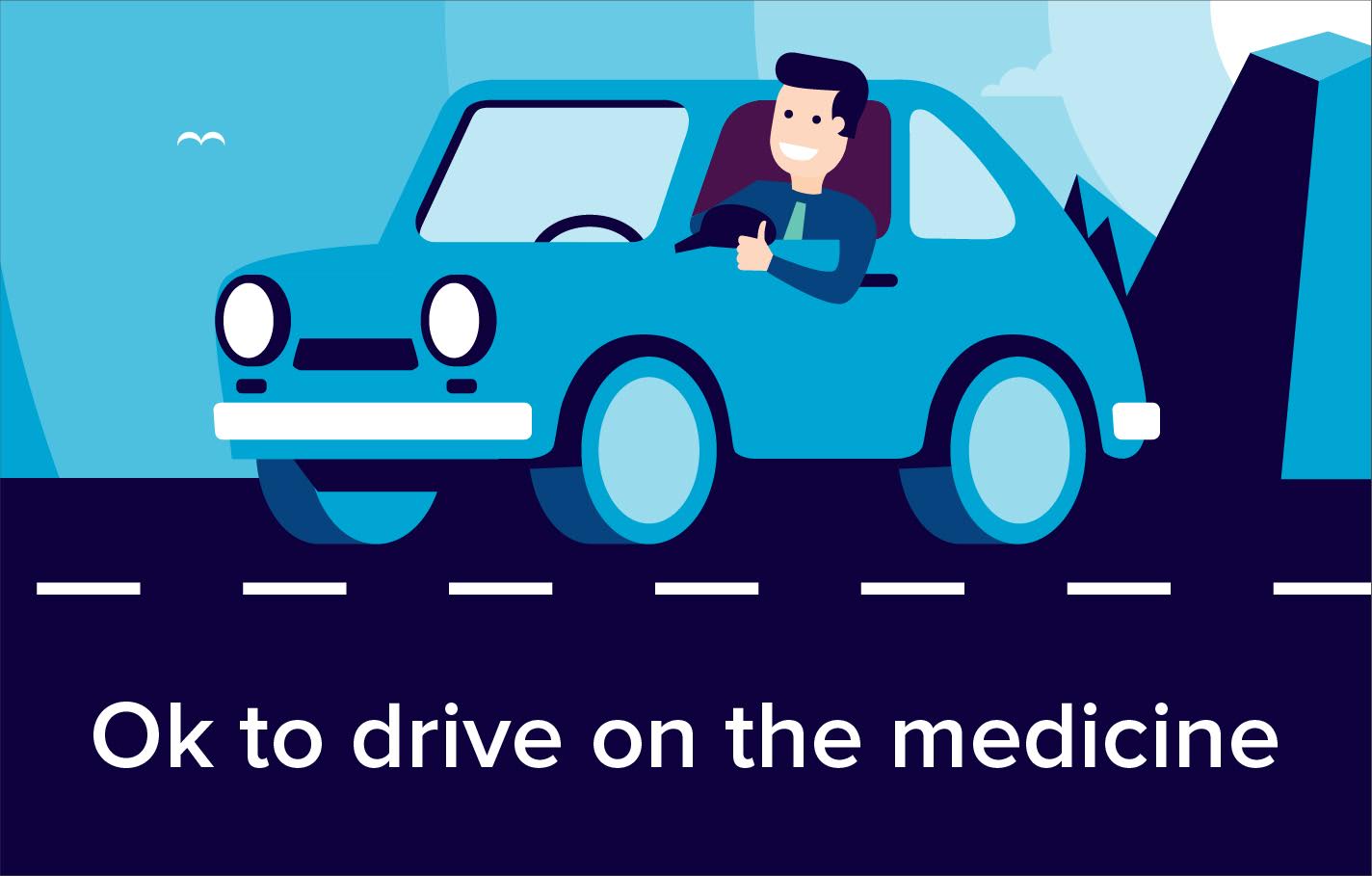Forxiga tablets contain the active ingredient dapagliflozin, which is a medicine used to help control blood sugar levels in people with type 2 diabetes. Read on for advice on its use and possible side effects.

What is Forxiga used for?
- Type 2 diabetes (non-insulin dependent diabetes) in adults aged 18 years and over.
- Forxiga tablets can be used on their own to improve blood sugar control in people whose blood sugar is not controlled by changes to their diet and exercise alone, and who can't take an antidiabetic medicine called metformin.
- Forxiga tablets can also be used for people with type 2 diabetes whose blood sugar is not sufficiently controlled by other antidiabetic medicines.
How does Forxiga work?
- Forxiga tablets contain the active ingredient dapagliflozin, which is a type of medicine called an SGLT2 inhibitor.
- In type 2 diabetes the cells in the body become resistant to the action of insulin. Insulin is the main hormone responsible for controlling the level of sugar (glucose) in the blood. It makes cells in the body remove sugar from the blood. When the cells are resistant to insulin this makes blood sugar levels rise too high.
- Dapagliflozin works in the kidneys, where it allows the body to excrete excess sugar from the blood into the urine.
- Normally, when the kidneys filter and clean the blood, glucose is filtered out of the blood at the same time. The glucose is then reabsorbed back into the blood by a mechanism called the sodium-glucose co-transporter 2 (SGLT2). The kidneys normally reabsorb glucose back into the blood even when the levels of glucose in the blood are too high, as in diabetes.
- Dapagliflozin works by inhibiting the SGLT2 transporter. This allows excess glucose to be filtered out of the blood and excreted in the urine. This will reduce blood sugar levels.
- Dapagliflozin has two other effects that may be of benefit for people with diabetes. Firstly, it may cause weight loss due to the loss of sugar from the body. Secondly, it causes a small increase in the amount of water being filtered out of the blood into the urine (diuresis). This may help to reduce blood pressure.
How do I take Forxiga?
- Forxiga should be taken once daily on a regular basis to keep your blood sugar under control.
- The tablets should be swallowed whole with a drink of water. They can be taken either with or without food.
- The usual dose of dapagliflozin is one 10mg tablet taken once daily. However, always follow the instructions given by your doctor. Sometimes a lower dose of 5mg once daily may be prescribed.
- You can take your tablet at any time during the day, but try to take it at the same time each day. This will help you remember to take it.
- If you forget to take a dose at your usual time and it is less than 12 hours late when you remember, take the missed dose straight away. Then take your next dose at your usual time. If you forget a dose and it is more than 12 hours late when you remember, then do not take the missed dose. Just take your next dose as usual when it is due. Do not take a double dose to make up for a missed dose.
What should I know before taking Forxiga?
- It is important that you continue to follow the diet and exercise advice given to you by your doctor or nurse while you are using this medicine. Forxiga only helps to control your blood sugar levels and should not be used as a substitute for eating healthily and taking regular exercise.
- Hypoglycaemia (low blood glucose) has been very commonly reported when dapagliflozin is used in combination with sulphonylurea medicines, eg glibenclamide, or with insulin. Symptoms of hypoglycaemia usually occur suddenly and may include cold sweats, cool pale skin, tremor, anxious feeling, unusual tiredness or weakness, confusion, difficulty in concentration, excessive hunger, temporary vision changes, headache, nausea and palpitations. You should talk to your doctor or diabetes specialist about this and make sure you know what to do if you experience these symptoms. Your doctor may need to adjust your doses.
- Your ability to concentrate or react may be reduced if you have low blood sugar, and this can cause problems driving or operating machinery. You should take precautions to avoid low blood sugar when driving - discuss this with your doctor. This medicine may also cause dizziness or fatigue. If affected you should take care driving or operating machinery.
- People who are taking antidiabetic tablets should only drink alcohol in moderation and accompanied by food. This is because alcohol can make the warning signs of low blood sugar less clear, and can cause delayed low blood sugar, even several hours after drinking.
- Your doctor may want you to check your blood sugar level from time to time while you are taking Forxiga. Make sure you discuss how to do this and how often with your GP, pharmacist or diabetes specialist. You should be aware that your urine will test positive for glucose while you are taking this medicine; this is due to the way the medicine works.
- Tell your doctor if you develop vomiting or diarrhoea, or are unable to eat or drink while you are taking Forxiga. This is because these problems can cause dehydration. Your doctor may want you to stop taking this medicine temporarily until you recover to help avoid dehydration.
- Your kidney function should be monitored regularly while you are taking Forxiga. Your doctor will usually want to check your kidney function once or twice a year, or more frequently if you are elderly, have any existing kidney problems or start taking any medicines that could affect your kidney function.
- If you frequently get cystitis or urinary tract infections while taking Forxiga you should consult your doctor. Tell your doctor if you get signs of a severe UTI, such as a fever, shivering, pain in your back or side or blood in your urine. Most UTIs can be treated while you are still taking this medicine, but if the infection affects your kidneys your doctor may want you to stop taking this medicine temporarily.
- A potentially serious side effect called diabetic ketoacidosis has been reported in some people taking SGLT2 inhibitor medicines such as this one since these medicines have been launched. Signs and symptoms of this condition include nausea, vomiting, abdominal pain, loss of appetite, excessive thirst, difficulty breathing, confusion, unusual fatigue or sleepiness. It is important to get medical advice from your doctor immediately if you experience these symptoms while taking Forxiga.
Forxiga should be used with caution by
- Elderly people.
- People with severely decreased liver function.
- People taking medicines for high blood pressure who have a history of low blood pressure.
- People with heart disease.
- People with a high percentage of red blood cells in the blood (high haematocrit).
- People with a history of frequent urinary tract infections.
- People with a history of frequent genital infections such as thrush.
Who should not take Forxiga?
- People with type 1 diabetes.
- People with diabetic ketoacidosis.
- People taking the medicine pioglitazone for diabetes.
- People with moderate to severely decreased kidney function.
- Women who are pregnant or breastfeeding. See below.
- People allergic to any ingredients of the medicine, for example people with rare hereditary problems of galactose intolerance, the Lapp lactase deficiency or glucose-galactose malabsorption (Forxiga tablets contain lactose).
- Forxiga is not recommended for people taking loop diuretics eg furosemide.
- Forxiga is not recommended for people with low fluid volume or salt levels in the body, eg due to diuretic therapy, low-sodium diet, diarrhoea or vomiting.
- Forxiga is not recommended for people over 75 years of age or for children and adolescents under 18 years of age, because it has not been studied in these age groups.
Can I take Forxiga while pregnant or breastfeeding?
- The safety of dapagliflozin for use during pregnancy has not been established and Forxiga should not be used during pregnancy. Diabetes mellitus is usually controlled using insulin during pregnancy, because this provides a more stable control of blood sugar. If you get pregnant while taking Forxiga, or are planning a pregnancy, you should seek medical advice from your doctor.
- It is not known if dapagliflozin passes into breast milk. The manufacturer states that Forxiga should not be used by breastfeeding mothers. Get further medical advice from your doctor.
What are the possible side effects of Forxiga?
Medicines and their possible side effects can affect individual people in different ways. The following are some of the side effects that are known to be associated with dapagliflozin. Just because a side effect is stated here, it does not mean that all people using this medicine will experience that or any side effect.
Very common
- Low blood sugar levels (when used with a sulphonylurea such as glibenclamide, or with insulin).
Common
- Vaginal thrush.
- Inflammation of the penis and/or foreskin (candidal balanitis).
- Difficulty or pain passing urine (dysuria).
- Increased production of urine (polyuria).
- Urinary tract infections (see what should I know above).
- Back pain.
- Dizziness.
- Increased percentage of red blood cells in the blood (increased haematocrit).
- Changes in the levels of cholesterol and other fats in the blood.
Uncommon
- Vaginal changes such as itching, abnormal discharge or odour.
- Dehydration. Consult a doctor straight away if you experience symptoms of this, such as excessive thirst, a very dry or sticky mouth, sleepiness, a fast heartbeat, or passing little or no urine.
- Low blood pressure.
- Constipation.
- Excessive sweating.
- Needing to pass urine at night (nocturia).
- Increased creatinine and urea (markers of kidney function) in the blood.
- Weight loss.
Can I take other medicines with Forxiga?
It is important to tell your doctor or pharmacist what medicines you are already taking, including those bought without a prescription and herbal medicines, before you start treatment with Forxiga. Similarly, check with your doctor or pharmacist before taking any new medicines while taking this one, to make sure that the combination is safe.
Forxiga should not be used in combination with pioglitazone.
Dapagliflozin may enhance the effect of diuretic medicines such as furosemide or bendroflumethiazide, which help to remove water from the body. If you are taking both, your doctor may change your dose of Forxiga or the diuretic medicine to make sure that you do not lose too much fluid.
Medicines that increase blood sugar levels as a side effect may make dapagliflozin less effective at controlling blood sugar. Medicines that can increase blood sugar levels include the following:
- antipsychotic medicines, such as chlorpromazine, olanzapine, risperidone
- beta-2-agonists, such as salbutamol, salmeterol
- corticosteroids, such as prednisolone
- glucosamine
- oestrogens and progestogens, such as those found in oral contraceptives or HRT
- thiazide diuretics, such as bendroflumethiazide.
If you have any more questions please ask your Pharmacist.
Remember to keep all medicines out of reach of children
Please Note: We have made every effort to ensure that the content of this information sheet is correct at time of publish, but remember that information about drugs may change. This sheet does not list all the uses and side-effects associated with this drug. For full details please see the drug information leaflet which comes with your medicine. Your doctor will assess your medical circumstances and draw your attention to any information or side-effects which may be relevant in your particular case.
References:
https://www.medicines.org.uk/emc/medicine/27188
http://www.diabetes.co.uk/diabetes-medication/forxiga-dapagliflozin.html
http://patient.info/medicine/dapagliflozin-tablets-forxiga
http://www.netdoctor.co.uk/medicines/diabetes/a8818/forxiga-dapagliflozin/




